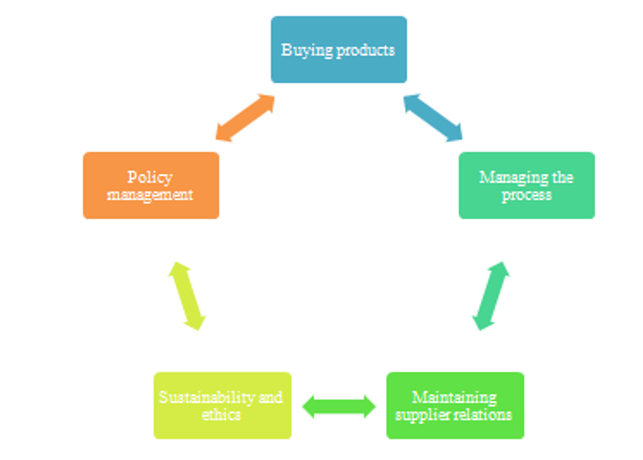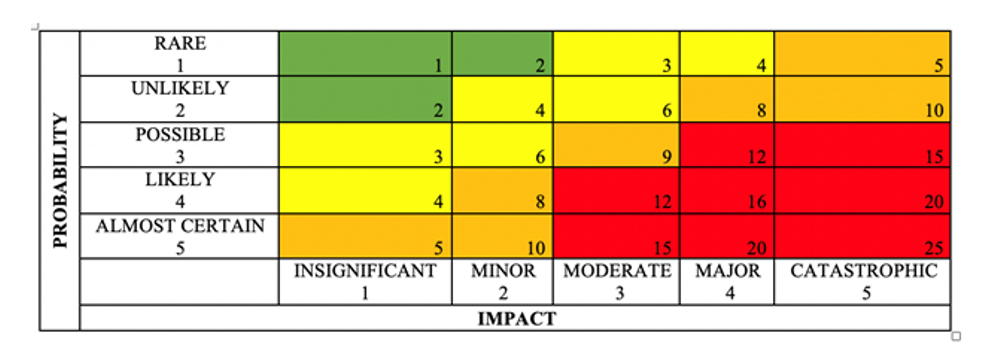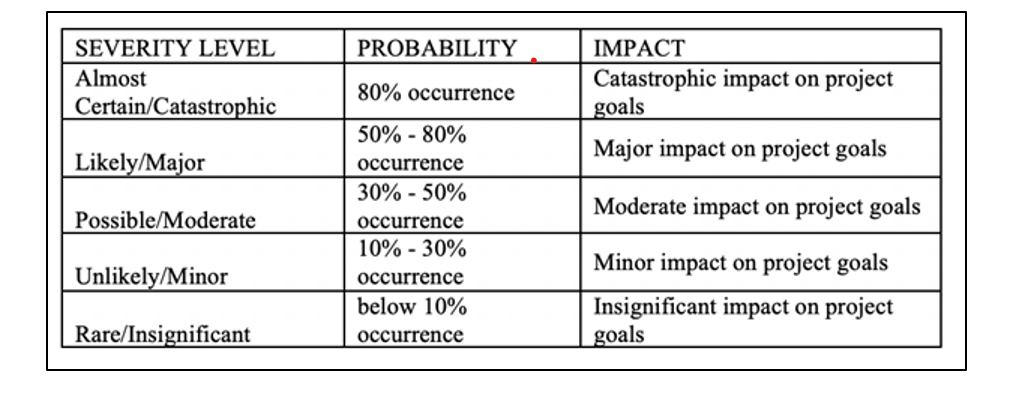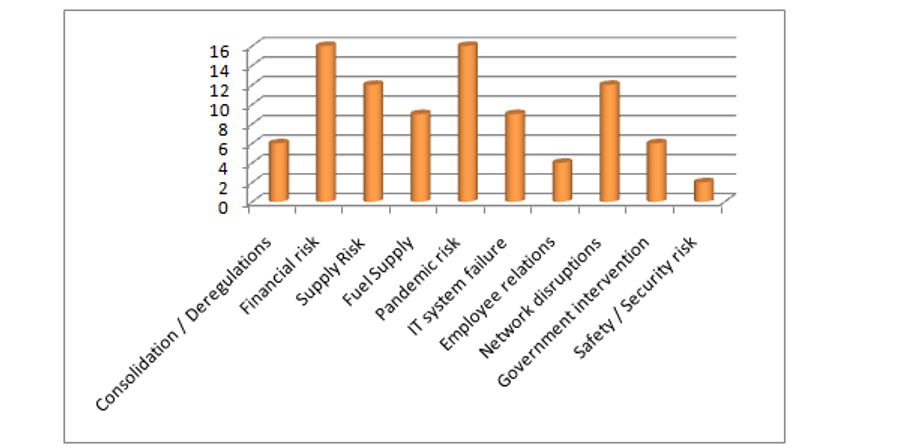PROCUREMENT RISK AND CONTRACT MANAGEMENT ASSESSMENT
Introduction
The concept of procurement has been defined as the act of gathering raw goods and services for fulfilling business purposes. It has also been referred to as the final act of buying, which has also included the procurement procedure as an essential element of companies for leading up to the final stage of purchasing decision (Hong et. al. 2018).
In any organization, at the time of procurement, there might be various kinds of risks. Those have consisted of inaccurate internal analysis, poor supplier or vendor selection, disorganized vendor management, delays in the process, talent shortages, and others (Hong et. al. 2018).
Throughout this study, there has been described procurement process and risk assessment management for the chosen organization, British Airways (BA). This organization has been considered a globally recognized airline company, which has been serving people with diversified cultures for more than 100 years. It has also flown across more than 170 destinations around 70 countries (Britishairways.com, 2021). This organization has also acquired 280 aircraft, including A380 and 787.
Question 1: Procurement Functions and Sourcing Methods
The airlines or aviation industry has been saving through strong purchasing for decades, but with a decline in unit revenues, the procurement must Step Up to the next level (Kakwezi and Nyeko, 2019). The purchasing of the Airways creates various strategic roles which drive Sourcing excellence. Others generally handle the activities in the procure-to-pay process. The strategic Sourcing methods drive the end-to-end Sourcing process from defining the Sourcing strategy and the demand optimization to supplier management and negotiation.
The primary procurement functions ensure that the industrial consumables, raw materials, and other types of equipment are available for production. British Airways is dedicated to making responsible purchasing decisions, refining their purchase process, and training the procurement team to make sure this happens. For British Airways, it is the key responsibility to mitigate the supplier risk.
In this regard, the procurement team records and measures every risk associated with the most important suppliers. The company timely identifies various suppliers experiencing difficulties or which can seriously impact the operations (Mena et. al. 2018). British Airways uses business continuity plans to cover supply failure risks and adequately and regularly reviews the efficiency with the suppliers. Apart from this, they also formulate contingency plans and are sure they are in place to respond to supply interruptions. The procurement team of British Airways is committed to surveying the potential suppliers to evaluate their corporate responsibility credentials by using self-certification data while deciding the suppliers.

Figure 1: Procurement functions of British Airways
(Source: Self-made, 2021)
British Airways is very consistent about the quality of its operations and processes (Arya et. al. 2015). Therefore, a proactive approach is used by the airline company. This approach is one of the best ways to reduce errors and predict the hazards before the occurrence. The key importance of the proactive approach within British Airways is that it assesses the risk before operational activities and ensures a safety management plan. This approach helps estimate the organizational flaws, quality of equipment, and conducting internal assessments and audits.
To boost the efficiency of the procurement process, British Airways is determined to develop trusted and strong relationships with supply partners (Weigel and Ruecker, 2017). The airline company sources the goods and services through a strategic sourcing process.
It uses a benchmark to ensure that the maximum value has been achieved at the point of purchase and over the contract’s life with the supplier.
British Airways understands its corporate Responsibility among the supplier base, which formulates an efficient strategy called responsible procurement. This is the multifaceted strategic approach that facilitates the company to understand in a clear manner that the CR credentials of the suppliers are aligned with the one destination corporate goals. Apart from this, the selected aviation company also maintains supplier payment performance. British Airways emphasized a centralized approach to maintain and control the suppliers and made a contract (Enoma, 2020). This helps control and manage the risks associated with suppliers and fulfilling CSR initiatives. British Airways maintains commercial arrangements with other airlines. The commercial arrangements govern various things, capacity offered by every airline, and sharing revenue.
Considering the relationship between British Airways and suppliers, the agency theoretical approach can be illustrated. It can be said that the agency relationship occurs when one party has to rely on the act of the others. In this scenario, British Airways is dependent on the supplies from the suppliers. On the other side, the suppliers and other vendors are dependent on the business received from British Airways. This agency theory states that the parties make the key decisions in any relationship under some conditions of risk and uncertainty (Bruel, 2016). This theory states that an agency relationship is a contract where the principal engages another agent or person to perform specific work on its behalf. It delegates the decision-making rights. Some other assumptions made in the agency theory are that the efficiency of the principals was operations dependent on agents’ tasks.
The Sourcing method used by British Airways is Strategic Sourcing. This procurement process connects the analysis, Data Collection, market research, contracting, and negotiation. This type of sourcing stops the shortage of actual purchases. It allows British Airways to consolidate the purchasing power to attain the best possible lowest cost of ownership and minimise the supply chain risks. This Holistic approach is efficiently implemented in the procurement process and supply chain of British Airways.
It is further dependent on the continuous evaluation of Sourcing activities of the business, and it analyses the market and aligns the business goals with the suppliers. This strategic method of Sourcing is beneficial to reduce the cost and fix the errors of the existing process (Russell and Thukral, 2017). This is done by a well-formed and Competent Sourcing team of the company. This team is effective for the airline company in developing the opportunities for better management of the global network of suppliers. It improves the speed of the market and develops a new procurement model. The focus of British Airways is on managing the category dealing, Monopoly suppliers, system Optimization, and aligning the purchasing strategy with the overall corporate strategy.
Managing the overall Sourcing strategy and procurement process of British Airlines is a complex process. Therefore, adopting the strategic Sourcing method takes a collaborative and organized approach to associate the procurement strategy with the supplier’s activities. It receives long-term cost Savings and various business benefits. The first and foremost benefit is linked with reducing direct and indirect costs. Elimination of unnecessary costs is one of the biggest advantages of the strategic Sourcing efforts of British Airways. It creates a positive impact on the financial profitability and net profit margin. Apart from this, another advantage is that it boosts long-term supplier relationships.
The global nature of Sourcing impacts the procurement managed with the suppliers (Parniangtong, 2016). It is essential to make the right supplier selection. Thus, by completely understanding the objectives of Sourcing and emphasizing the core capabilities of suppliers, this becomes possible. For the Sourcing team of British Airways, the motive is to achieve mutual success by performing well with the suppliers.
The procurement executives of the airline company are finding various innovative ways to maximize the Sourcing efforts and deal with the supply disruption at all levels. Integrated supply and management is that approach that connects the manufacturers with the suppliers. This develops the foundation for strategic indirect cost reduction, risk mitigation, improved go-to-market, and efficiency improvement.
Question 2: Risk Assessment and Management
Procurement Risks in British Airways (BA)
In the field of procurement of any organization, it has been seen that there might rise numerous kinds of risks altogether. Now, here have been discussed in terms of BA’s procurement risks with a brief explanation as follows:
- Consolidation / Deregulations: As the aviation industry has been becoming competitive, BA has faced issues coping with current market situations. This might lead to future aviation consolidation and failure. After merging with Iberia and American Airlines, BA might face planning risks at suboptimal design (com, 2021). However, as the UK government controls the market, several restrictions might also arise to expand business in foreign markets.
- Financial Risk: As BA has been carrying substantial debt, it must first be needed to repay or refinance. However, due to high aircraft orders and future growth plans, it becomes vulnerable as per current economic conditions. Moreover, BA’s revenue has also been deteriorating as per the global economy rate, which might also create further economic business risks in some time (com, 2020).
- Supplier Risk: In BA, as they have depended a lot upon key suppliers for several principal business activities, a further failure of these suppliers might restrict the delivery of contractual obligations to its core business operations. In this way, the whole supply chain management (SCM) system and procurement infrastructure have been hampered with negative outcomes and pitfalls altogether.
- Fuel Supply: To ensure BA’s seamless business operations, the Heathrow Jet fuel supply has played a pivotal role. However, due to the recent regulations in terms of Biofuel usage airlines, pipeline system-based the risk of contamination has been increased (Huma al. 2020). Due to such contamination, an operational impact might arise, which has also restricted the core airline operations.
- Pandemic (COVID-19) risk: Due to the recent deadlier outbreak of the COVID-19 pandemic, the rate of employee absenteeism has affected the core business operations of BA badly. Moreover, due to the sudden imposition of lockdowns and other kinds of transport restrictions, BA has been unable to resume its airline and aviation operations just like before, impacting profitability (com, 2020).
- IT System Failure: As the core BA’s airline operations have mostly depended on enhanced IT systems, this risk must hamper the principal business operations. Failure of a key IT system might induce a significant disruption to airline operation with a massive loss of revenue at the same time. System control, disaster recovery, and others have been suggested as mitigation strategies.
- Employee Relations: As BA has acquired a largely unionized workforce, due to collective means of bargaining, the whole workforce might be broken down into some parts. In this way, apart from employee connection, the whole business operation has been disrupted, which has also affected the core business performance at the same point (Tan, 2019).
- Network Disruption: BA might face another risk of long-term network disruption due to significant failure in the public transport system. Due to partial loss of terminal at Heathrow, adverse weather conditions, or any kind of natural calamities, this risk might occur within BA’s core business operations. It has also resulted in a massive loss of revenue equipped with additional costs (com, 2020).
- Government Interventions: As the airline industry has been regulated by the government, due to the sudden enactment of policies regarding routes, security, and environmental controls, BA’s business operation might be hampered. Apart from that, sometimes, due to sudden intervention, BA’s operational and financial performance has also been staggered at the same time.
- Safety/Security Risk: BA’s all existing employees, and valued customers have been considered fundamental values for the whole business entity. Hence, in the case of a security or safety system failure, the whole business operation and performance should be hampered with adverse effects. Besides, financial performance has also been badly affected by BA.
Risk Management Strategy in BA
A feasible risk management strategy must ensure plausible identification and mitigation of business risks on time. Now, here have been described some risk management strategies against upper-mentioned BA’s procurement risks as follows:
- Avoid: In this stage, when any impending risks have been eliminated, avoidance can be followed. However, this might also induce a condition where any task has not been done uniquely. As a risk management strategy, through avoidance, a project manager has also acquired other options, choices, or preferences of changing or isolating the whole project objective connected to the risk. As stated by Rejeb al. (2018), in the case of BA, it has been said that all kinds of business risks should have been needed to be avoided first at the early stage just before it will become a significant threat against seamless business operations.
- Transfer: In this specific context, any business risk has mainly been shifted to a third party. For instance, in the sense of BA’s business operational risks, any kind of insurance company might acquire the core responsibilities of business in terms of taking care of that risk on behalf of the ownership. Apart from that, in this transfer approach of risk management strategy, it should be kept in mind that the third party owner might take partial or full responsibility for the risk with some small amount of premium or money at stake (Schuhmann and Eichhorn, 2017). However, in this approach, BA has not also been able to eliminate the whole business risk thereafter.
- Mitigate: In this case of the risk management approach, the business risk has mainly been reduced or eliminated along with the possibility of occurrence. Additionally, as per maintaining acceptable limits, the overall impact and likelihood of such risks have also been reduced at the same time. This kind of risk mitigation strategy has also focused on earlier actions, which have been taken to reduce the risk probability level associated with the impact of the same risk after all (Wong, 2020). For example, in the case of BA’s business procurement risks, with the help of advanced innovation and technology, these kinds of business operational risks can be reduced in the future.
Risk Assessment
This has been considered as the process of identifying potential hazards. Additionally, it has also been analyzed in the case of any further occurrence. Through a feasible Business Impact Analysis (BIA), it has been able to determine potential impacts resulting from any disruption of time-sensitive or critical business proceedings at the same point.
Now, it has been said that in the process of risk assessment, after successful risk identification, probability and impact scores should be available (Rane and Potdar, 2021). In a word, it can also be said that both impact and probability scores are calculated against a severity level and score scheme thereafter. Here has been persecuted those severity levels below:
| 1 = Rare / Insignificant,
2 = Unlikely / Minor, 3 = Possible / Moderate, 4 = Likely / Major, and 5 = Almost Certain / Catastrophic |

Figure 2: Risk Matrix Model
(Source: Gao et. al. 2020)
Now, here has been presented the scoring scheme in terms of risks below:

Figure 3: Score Scheme of Risk Probability and Impact
(Source: Gao et. al. 2020)
Therefore, it can also be said that for calculating the rate of the Severity of connected risks, those upper factors of probability and impact have mainly been multiplied with each other. The formula is –
| Risk Score (Severity) = Probability * Impact |
For instance, for any risk, if the values are of probability and impact have been denoted at 5 and 4, respectively. The risk score (severity) will be calculated at 20. (5*4 = 20)
Now, here has been presented a risk assessment table on behalf of BA’s procurement risks (previously mentioned) as follows:
| Risk | Probability | Impact | Risk Score | Risk Control | Secondary Risk |
| Consolidation / Deregulations | 3 | 2 | 6 | Transfer | Restricted market entry |
| Financial risk | 4 | 4 | 16 | Mitigate | Delays in airline business operations |
| Supply Risk | 4 | 3 | 12 | Accept / Mitigate | Lack of customer satisfaction |
| Fuel Supply | 3 | 3 | 9 | Accept | Lack of service quality delivery |
| Pandemic risk | 4 | 4 | 16 | Accept / Mitigate | Disrupted business functions and mechanisms |
| IT system failure | 3 | 3 | 9 | Accept | Increased cost and time leading delays |
| Employee relations | 2 | 2 | 4 | Accept | Poor employee engagement and satisfaction |
| Network disruptions | 3 | 4 | 12 | Transfer | Project delays with increased costs |
| Government intervention | 3 | 2 | 6 | Transfer | None |
| Safety / Security risk | 2 | 1 | 2 | Mitigate | Por employee retention and increased staff turnover |
Table 1: Risk Assessment of BA’s procurement risks
(Source: Self-made, 2021)
Now, here has also been presented an in-detailed risk matrix against those BA’s procurement business risks as follows:
|
PROBABILITY |
Rare
1 |
|||||
| Unlikely
2 |
Safety / Security | Employee Relations, | ||||
| Possible
3 |
Consolidation, Government intervention | Fuel, IT system failures, | Network disruption, | |||
| Likely
4 |
Supply, | Finance, Pandemic, | ||||
| Almost Certain
5 |
||||||
| Insignificant
1 |
Minor
2 |
Moderate
3 |
Major
4 |
Catastrophic
5 |
||
| IMPACT | ||||||
Table 2: Risk Matrix of BA’s procurement
(Source: Self-made, 2021)
Now, here has been presented a risk ranking based on BA’s procurement management as follows:

Figure 4: Risk Ranking
(Source: Self-made, 2021)
In this above graphical representation, there have been included BA’s procurement risks as per their severity levels on the probability impact calculation.
Conclusion and Recommendations
Conclusion
From that upper in-detailed discussion, it can be concluded that procurement in a business organization has played pivotal roles towards future organizational growth, success, and development. Apart from that, several risks have also appeared within BA’s core airline business operations along with the procurement progress. In this way, feasible risk management and assessment strategy have also been developed with identified procurement risks and other things at the same time. Moreover, proper risk control strategies have also helped a lot to overcome such business risks with high business productivity and profitability in the future of the business. Furthermore, as per risk ranking data, crucial risks should be able to be mitigated as soon as possible.
Recommendations
Here have been recommended some plausible ways to overcome procurement issues, risks, and challenges in BA below:
- It has been recommended to eradicate inefficiency and ineffective processes with meaningful changes after the successful conduction of a review in airline business operations (Gao al. 2020).
- It has been suggested to consolidate key supplier lists of BA, which has also helped a lot to enable procurement teams with high leverage of economy and sales along with the improved quality of airline services.
- It has been opined to arrange proper training and development programs for BA’s existing employees to implement shared knowledge and adequate skills regarding procurement among them.
-
References
Arya, A., Frimor, H. and Mittendorf, B., (2015). Decentralized procurement in light of strategic inventories. Management Science, 61(3), pp.578-585.
Britishairways.com, (2020), Principal risks and uncertainties. [Online]. Available at: https://www.britishairways.com/cms/global/microsites/ba_reports0910/pdfs/Risks.pdf. Accessed on 28th October 2021.
Britishairways.com, (2021). [Online]. Available at: https://www.britishairways.com/en-in/information/about-ba. Accessed on: 28th October 2021.
Enoma, B., (2020). Data breach in the travel sector and strategies for risk mitigation. Journal of Data Protection & Privacy, 3(4), pp.418-426.
Gao, Q., Guo, S., Liu, X., Manogaran, G., Chilamkurti, N., and Kadry, S., (2020). Simulation analysis of supply chain risk management system based on IoT information platform. Enterprise Information Systems, 14(9-10), pp.1354-1378.
Hong, Z., Lee, C.K. and Zhang, L., (2018). Procurement risk management under uncertainty: a review. Industrial Management & Data Systems.
Huma, S., Ahmed, W. and Najmi, A., (2020). Understanding the impact of supply-side decisions and practices on supply risk management. Benchmarking: An International Journal.
Kakwezi, P. and Nyeko, S., (2019). Procurement processes and performance: Efficiency and effectiveness of the procurement function. International Journal of Social Sciences Management and Entrepreneurship (IJSSME), 3(1).
Mena, C., Van Hoek, R. and Christopher, M., (2018). Leading procurement strategy: driving value through the supply chain. Kogan Page Publishers.
Parniangtong, S., (2016). Strategic sourcing: concepts, principles and methodology. In Supply Management (pp. 5-14). Springer, Singapore.
Rane, S.B. and Potdar, P.R., (2021). Blockchain-IoT-based risk management approach for project procurement process of asset propelled industries. International Journal of Procurement Management, 14(5), pp.641-679.
Rejeb, A., Sűle, E. and G Keogh, J., (2018). Exploring new technologies in procurement. Sage.
Russell, J.S. and Thukral, N., (2017). 4 Strategic sourcing and procurement. In Gower Handbook of Supply Chain Management (pp. 343-360). Routledge.
Schuhmann, R. and Eichhorn, B., (2017). Reconsidering contact risk and contractual risk management. International Journal of Law and Management.
Tan, L., (2019). Corporate Metrics Methodology Application for the Market Risk Quantification in British Airways Company. International Journal of Procurement Management.
Weigel, U. and Ruecker, M., (2017). The strategic procurement practice guide. Management for Professionals.
Wong, J.T., (2020). Dynamic procurement risk management with supplier portfolio selection and order allocation under green market segmentation. Journal of Cleaner Production, 253, p.119835.
………………………………………………………………………………………………………………………..
Know more about UniqueSubmission’s other writing services:


